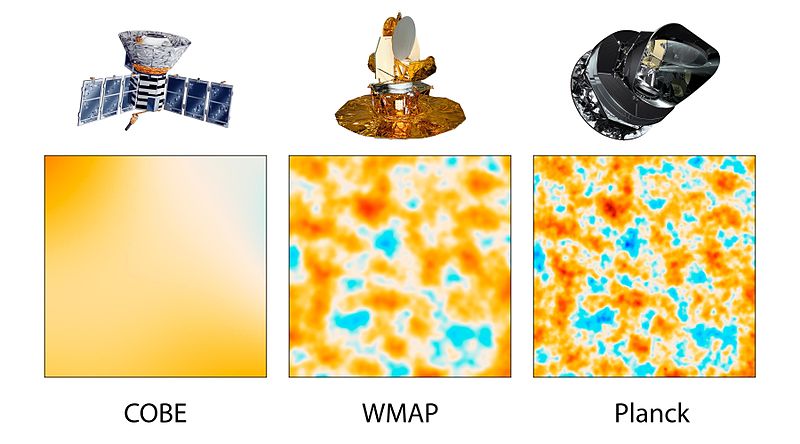Ficheiro:PIA16874-CobeWmapPlanckComparison-20130321.jpg

Dimensões desta antevisão: 800 × 444 píxeis. Outras resoluções: 320 × 178 píxeis | 640 × 356 píxeis | 1 024 × 569 píxeis | 1 280 × 711 píxeis | 3 600 × 2 000 píxeis.
Imagem numa resolução maior (3 600 × 2 000 píxeis, tamanho: 429 kB, tipo MIME: image/jpeg)
Histórico do ficheiro
Clique uma data e hora para ver o ficheiro tal como ele se encontrava nessa altura.
| Data e hora | Miniatura | Dimensões | Utilizador | Comentário | |
|---|---|---|---|---|---|
| atual | 00h48min de 23 de março de 2013 |  | 3 600 × 2 000 (429 kB) | Nagualdesign | White background. I tried to upload this as a derivative file but Derivative FX kept hanging. (IE9 user.) |
| 02h31min de 22 de março de 2013 |  | 3 600 × 2 000 (421 kB) | Drbogdan | User created page with UploadWizard |
Utilização local do ficheiro
As seguintes 3 páginas usam este ficheiro:
Utilização global do ficheiro
As seguintes wikis usam este ficheiro:
- ar.wikipedia.org
- de.wikipedia.org
- el.wikipedia.org
- en.wikipedia.org
- es.wikipedia.org
- eu.wikipedia.org
- fi.wikipedia.org
- fr.wikipedia.org
- he.wikipedia.org
- id.wikipedia.org
- ig.wikipedia.org
- it.wikipedia.org
- ko.wikipedia.org
- nl.wikipedia.org
- pl.wikipedia.org
- ru.wikipedia.org
- ru.wikinews.org
- sl.wikipedia.org
- sr.wikipedia.org
- sv.wikipedia.org
- uk.wikipedia.org
- vi.wikipedia.org
- zh.wikipedia.org


